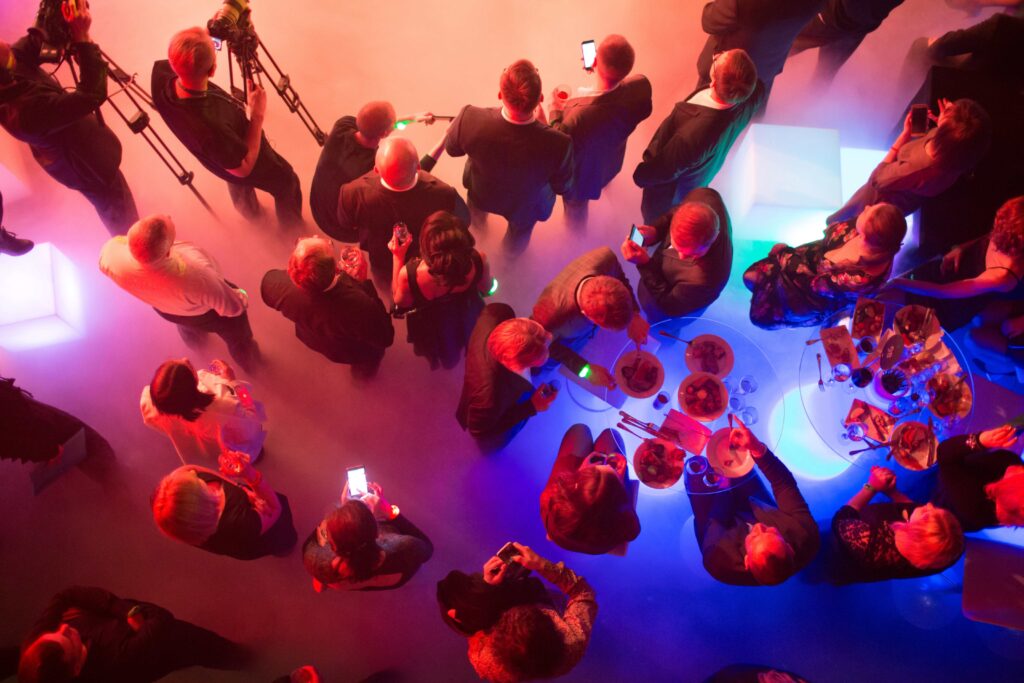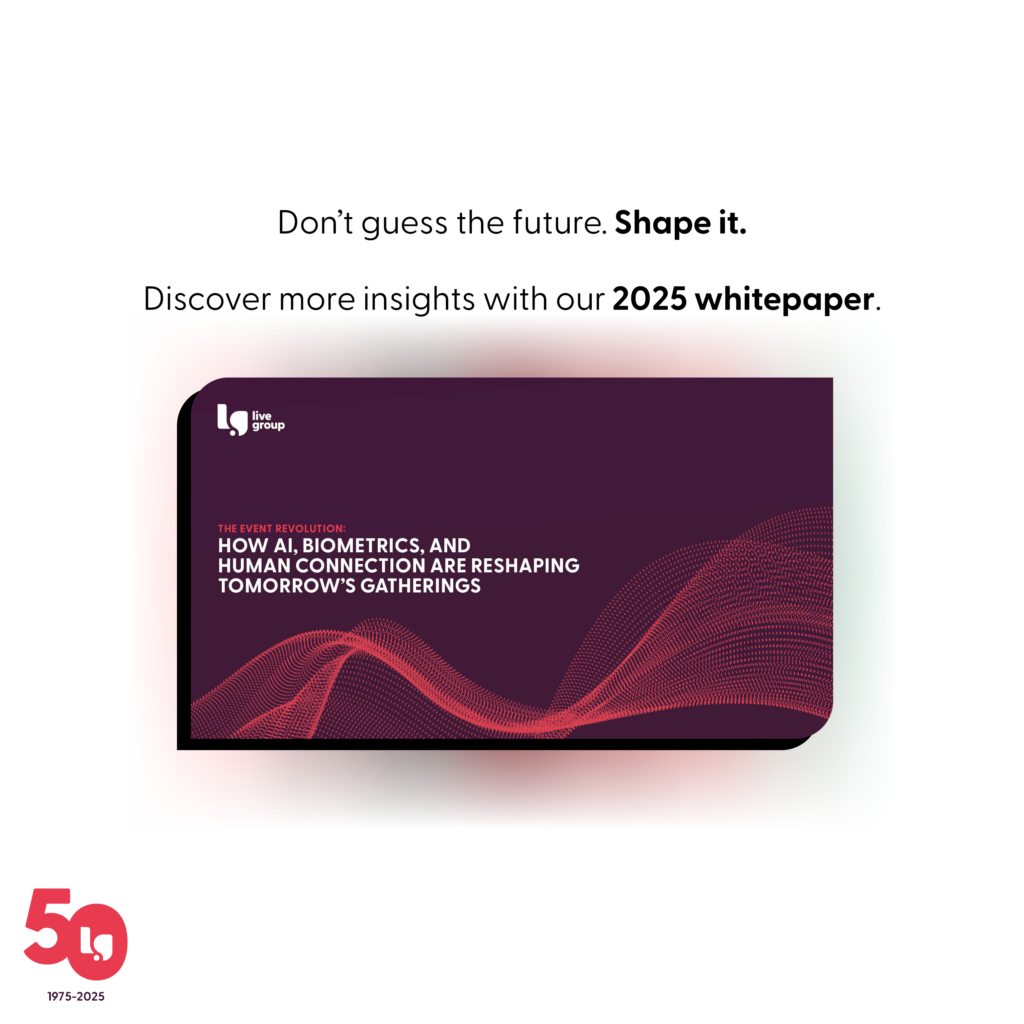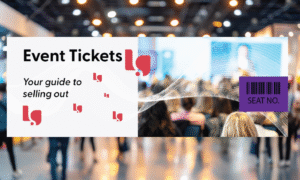If you’ve ever felt that off-the-shelf event packages don’t quite fit your objectives, audience, or brand, you’re not alone. A bespoke event approach may be the solution.
“Bespoke” has become a popular label in the events world, but it’s more than a buzzword. A bespoke event is a tailored experience, designed from the ground up around your specific goals and audience needs, with every decision, content, format, venue, technology, sustainability, and measurement, shaped to deliver meaningful outcomes.
What is a “bespoke event”?
A bespoke event is not simply a themed version of a standard conference. It’s a tailored experience built around a defined strategy. Rather than starting with a fixed agenda, a set number of sessions, and a generic venue layout, the team begins with your outcomes. Do you want to launch a product, change behaviour, build a partner community, influence policy, or accelerate sales? The event is then crafted, programme, format, speakers, staging, and even bespoke event table plans, to move the right people towards those outcomes.
Key characteristics of a bespoke event:
- Outcome-led design: Starts with measurable objectives and works backwards.
- Audience personalisation: Content, timing, and formats shaped to the needs of distinct segments.
- Integrated content strategy: Storytelling that links plenary moments, breakouts, and comms before and after the day.
- Curated environment: Venue, staging, and flow designed to encourage the interactions you want.
- Technology as an enabler: Platforms, apps, and analytics that serve the experience, not the other way round.
- Continuous measurement: Feedback, sentiment, and action tracking built in from the outset.
Why go bespoke?
A bespoke event approach isn’t about adding cost for the sake of it; it’s about focusing resource where it moves the dial.
- Sharper impact: When the agenda, content, and networking are created for a specific audience, you waste less time and create more traction.
- Brand coherence: The event looks, feels, and sounds like your organisation, reinforcing trust and recognition.
- Better engagement: Delegates are more likely to participate when sessions are pitched at their level and formats match their learning styles.
- Improved ROI: Clear objectives, targeted content, and measurable actions make it easier to demonstrate value to stakeholders.
- Agility: Bespoke design can flex as conditions change (travel constraints, market news) without breaking the experience.
Which formats benefit from bespoke events the most?

Bespoke event thinking applies to any live, virtual or hybrid format, but it shines in moments where outcomes really matter:
- Leadership summits and partner conferences where alignment, decision-making, and trust are paramount.
- Product launches and customer showcases that need to immerse attendees in a clear value story.
- Employee and partner engagement where the goal is to inform, inspire, and mobilise at scale.
- Roadshows and community events that must adapt to regional audiences while staying on-brand.
- Awards and recognition where emotion and narrative make the difference.
The bespoke event process: from brief to build
This bespoke event planning process is a framework for designing tailored experiences. From initial strategy to bespoke event production, every step is focused on creating events that align with your objectives and audience.
1) Discovery: clarify the “why”
Justify the investment into your bespoke event experience. A robust discovery phase prevents costly rework later. Expect stakeholder interviews, previous event analysis, audience research, and a look at existing content and channels. The outcome is a concise strategy: target audiences, objectives, success metrics, and key messages.
Deliverables you should see: audience personas, problem/opportunity statement, KPIs, and a high-level experience blueprint.
2) Experience design: shape the journey
Here the creative and strategic threads for your bespoke event come together. The team defines the narrative arc, session formats, networking mechanics, and environmental cues, wayfinding, seating plans, and transitions. The agenda is written around attention and energy, not tradition.
What this looks like:
- Plenaries with purposeful length and strong framing.
- Breakouts designed for specific segments, technical deep-dives, executive roundtables, or peer-to-peer clinics.
- Curated networking with hosted tables, facilitated introductions, and topic zones.
- A bespoke event table plan that maximizes opportunities for new connections
3) Content and programme: make it meaningful
Content drives outcomes, so it’s crafted with intention. That can include speaker coaching, panel curation to avoid “same-voice syndrome”, and interactive moments, live polling, Q&A, scenario work, and challenges that encourage behaviour change.
Tip: build a content ladder that spans pre-event primers, live moments, and post-event recaps, so the learning and momentum of your bespoke event compounds rather than fade.
4) Production and logistics: make it possible
Bespoke doesn’t mean excessive. It means the right production at the right points. Set design should support the story; audio-visual should prioritise clarity, sightlines, and accessibility; and the showflow should keep speakers and delegates at ease.
Considerations: venue suitability, crew expertise, rehearsal discipline, speaker green rooms, and contingency plans for timings, power, and travel disruptions.
5) Technology and data: make it connected
Choose tools to serve the experience. This might include registration and ticketing, a mobile app for agendas and networking, live streaming for hybrid audiences, and analytics to track engagement. If personalisation matters, use profiles and tags to surface relevant sessions and people.
Privacy and trust: be transparent about what you collect (e.g., session attendance, poll responses) and why. Offer opt-outs. Store data responsibly and turn insights into action after the event.
6) Sustainability and accessibility: make it responsible
Build responsibility into the brief, not as an add-on.
- Sustainability: measure and reduce travel impact, prioritise local suppliers, plan for reuse/recycling of materials, and choose menus that minimise waste.
- Accessibility: consider step-free routes, quiet spaces, captioning, accessible registration, dietary needs, and inclusive session formats. Clearly signal what’s available well before the event.
A bespoke event should provide opportunities for a more sustainable and accessible approach. You can expect to invest less into unnecessary embellishments that won’t improve the experience and only focus on what matters to your attendees.
7) Risk and compliance: make it safe
Assess health and safety, safeguarding, data protection, and reputational risks. Create clear escalation paths and rehearse scenarios (e.g., speaker no-shows, tech failure, protest activity). Insurance and supplier due diligence are part of a bespoke approach too.
Budgeting for a bespoke event
A common misconception is that “bespoke” equals “expensive”. In reality, tailored design often saves money by focusing spend where it matters.
How to allocate budget effectively:
- Outcomes first: link line items to specific objectives. If a spend doesn’t support an outcome, challenge it.
- High-leverage moments: invest in the handful of experiences that most change perception or behaviour.
- Right-sized production: a beautifully lit, well-mic’d conversation can beat an over-engineered set.
- Data and insight: earmark budget for measurement and post-event content; it extends the event’s life and value.
- Supplier transparency: ask for itemised costs, value-engineering options, and alternatives for different audience sizes.
Measuring success (and proving it)
Set metrics at the start and measure them consistently. Useful indicators include:
- Registration vs. target and no-show rate
- Attendance by segment and session
- Engagement (questions asked, poll participation, networking connections)
- Content performance (which topics drew the right people)
- Sentiment and satisfaction (e.g., NPS, verbatim feedback)
- Post-event actions (demos booked, proposals issued, sign-ups, policy commitments)
- Longer-term outcomes (behaviour change, revenue influenced, community growth)
Dashboards should be ready within days of the event, with insights translated into recommendations for next time.
Hybrid and digital: bespoke beyond the room
Bespoke events aren’t just for in-person. Virtual and hybrid formats allow you to segment audiences intelligently, schedule content for different time zones, and repurpose assets. The virtual experience should be designed as its own product: shorter sessions, clear navigation, human moderation, and networking that actually works (think facilitated small groups rather than huge open chats).
Key point: the online audience is not the poor relation. Give them exclusive moments, backstage interviews, direct Q&A, or tailored workshops, and you’ll keep them engaged.
One of the most famous B2B event marketing examples, attracting tens of thousands of professionals from around the world. Inbound stands out not only for its focus on marketing and sales innovation but also for the calibre of its speakers: The Obamas, Amy Schumer, Trevor Noah, and more.
By bringing serious star power to the white-collar world, HubSpot transforms a business conference into an energising playground for professionals, sparking new ideas, partnerships, and engagement.
Choosing the right partner
If you’re engaging an agency, look for evidence of thinking and delivery, not simply glossy decks. Good partners will:
- Challenge your brief constructively and ask probing questions about outcomes.
- Show how strategy, creativity, production, and technology work together.
- Demonstrate accessibility and sustainability as standard practice.
- Provide clear pricing, realistic timelines, and honest risk assessments.
- Share relevant case studies with measurable results, not just pretty pictures.
- Be strong on speaker support, pre-event comms, and post-event follow-through.
- Demonstrate strong experience in bespoke event management in London and internationally.
Chemistry matters. You’ll be working closely together; choose a team that listens, adapts, and communicates well.
A quick checklist for your bespoke event
- What are the top three outcomes we want from this event?
- Who are the audience segments, and what do they need to think, feel, or do?
- What story will take them from “curious” to “committed”?
- Which two or three moments will have the greatest impact?
- How will we make the experience inclusive and sustainable?
- What does success look like, on the day and 90 days later?
- Which partner has the strategy, creativity, and delivery depth to help us get there?
Final Thoughts
Bespoke events aren’t about extravagance; they’re about relevance. When you build around outcomes and people, every element, content, space, technology, and follow-up, earns its place. Do that well, and your event stops being an isolated date in the diary and becomes a catalyst for the change you’re trying to make.
Ready to take the stress out of event planning?
Chat to us today about how our delegate management services can help bring your next event to life – on time, on budget, and beyond expectations. Whether you need full-scale delivery or targeted support, Live Group is here to help.
Yes. Bespoke events aren’t only for large-scale productions. Tailoring the agenda, content, and flow can deliver outsized impact without lavish production. The key is prioritisation.
For larger bespoke conferences, 6–9 months is sensible. For leadership offsites or roadshows, 8–12 weeks can work with decisive stakeholders and clear objectives.
Build a mix of speakers for your bespoke event: external names for profile, internal leaders for authenticity, and practitioners for credibility. Always have alternates and plan for solid facilitation.
The best bespoke events are interactive by design. Blend formats (fireside chats, clinics, roundtables) and incorporate interactive elements with clear prompts. Design for conversation, not just broadcast.
Bespoke event management doesn’t end when the lights go down. Plan the post-event phase at the start: highlight reels, key-takeaway PDFs, follow-up workshops, and actions assigned to owners. Treat the event as a milestone in a longer campaign.
Download our latest report to explore the latest event solutions, learn how event production agencies are leveraging technology for seamless conference planning, and uncover strategies to enhance hybrid event management.






